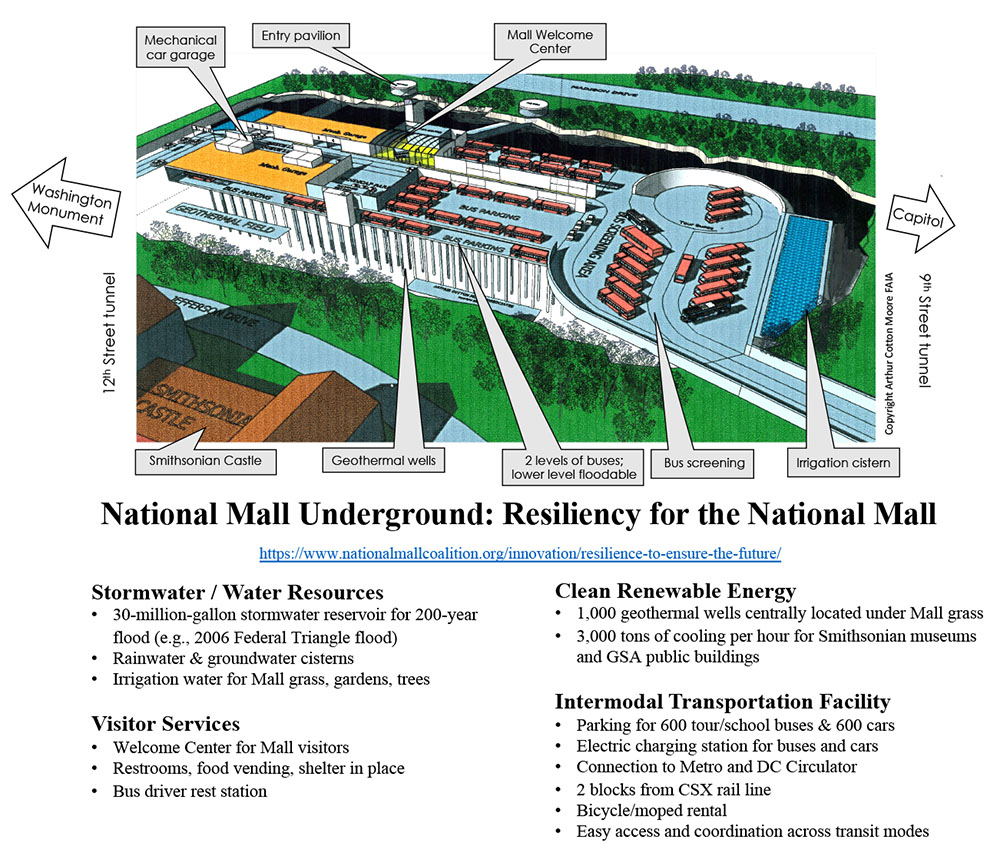August 2020 — A financial planning study, commissioned by the National Mall Coalition and carried out by Ram Island Strategies, Partners for Economic Solutions, and Bostonia Partners, has found that the proposed National Mall Underground is financially feasible, based in part on its revenue-generating potential from parking revenue, stormwater mitigation payments, and clean energy payments under existing federal programs.

Substantially all of the project’s costs would be privately financed by the issuance of private debt secured by these revenue sources, with a small portion being funded from federal or philanthropic sources.
The earlier Army Corps of Engineers’ positive report showed that the Underground is an effective flooding solution. The new study shows that it can be funded with limited public expense.
The National Mall Underground facility, to be located beneath the Mall grass panels between the Smithsonian Castle and the Natural History Museum, can take in 30 million gallons of stormwater, more than the volume of the 200-year flood that in 2006 inundated Mall museums and public buildings. Key additional elements include a Mall Welcome Center; tour bus and car parking for Mall visitors; geothermal wells to provide renewable energy for Smithsonian museums and nearby federal buildings; and rainwater cisterns to provide irrigation for Mall grass, trees, and gardens.
The US Army Corps of Engineers reviewed the project in 2018 and concluded that “Flood risk from a storm of the intensity flooded the Federal Triangle [Mall] area in 2006 could be reduced significantly . . . by implementation of the Underground.”
The financing plan finds that:
For stakeholders that have been investigating alternative solutions to the costly damage being inflicted on their assets from chronic and recurring flooding, the National Mall Underground can achieve a stormwater mitigation solution at significant cost savings. Of equal value to these federal stakeholders is that the financing plan uses existing federal contracting authorization programs to pay for this stormwater mitigation over time, avoiding the need for upfront appropriated dollars.
Next steps will be to engage Congress, the public, and Mall stakeholders in moving forward with this project, which benefits the public as well as the DC and federal governments and which will make the Mall more environmentally sustainable, visitor friendly, and resilient for the long-term.
Read the Executive Summary of the Preliminary Financing Plan here.
Watch a 17-minute video overview of the National Mall Underground below.
Contact: Judy Scott Feldman, PhD, Chair, National Mall Coalition, jfeldman@nationalmallcoalition.org
